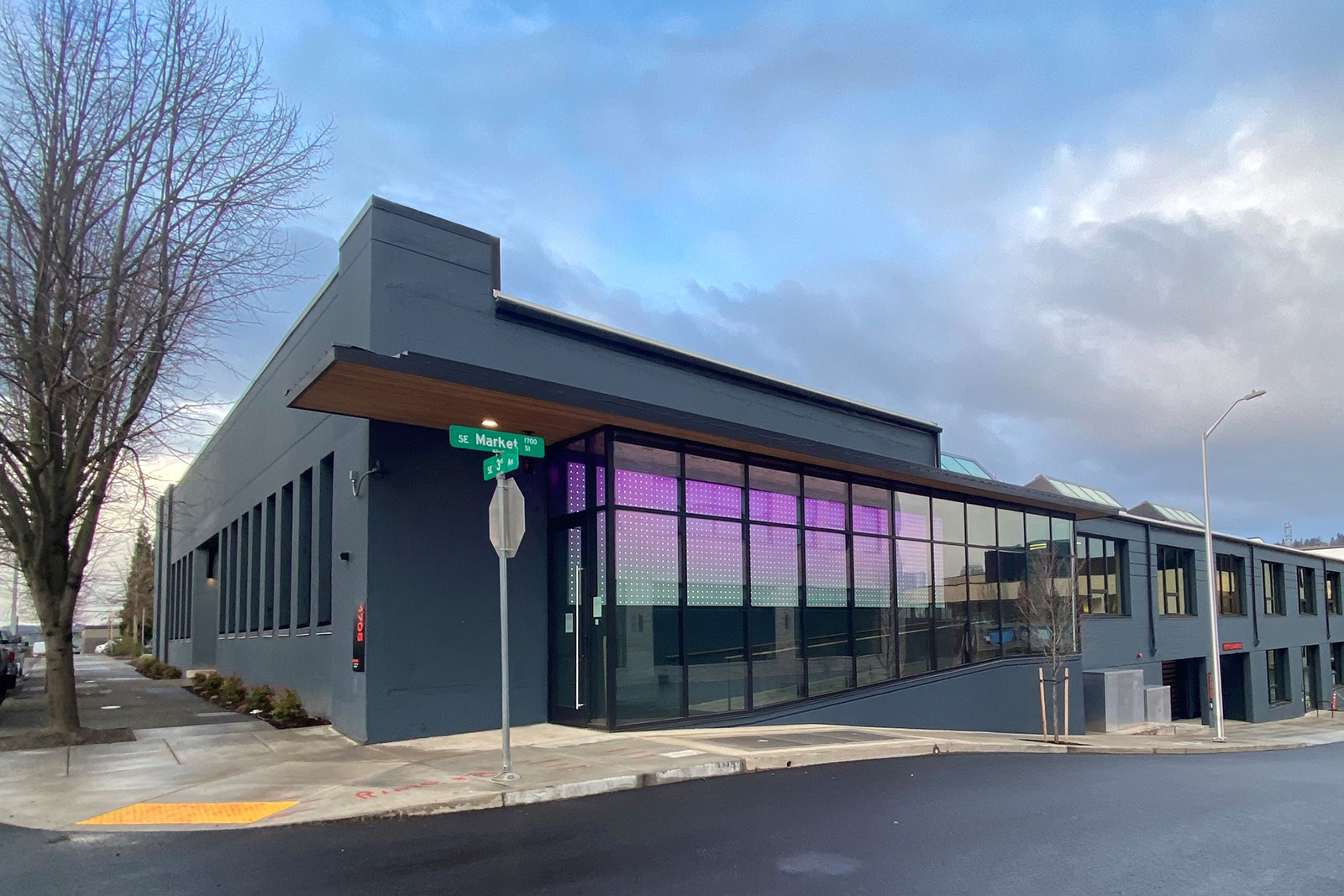


03.22.23
Bora’s core and shell renovation of the Southeast Portland Volta building, which also houses our new office, is officially LEED Platinum-certified, having received 82 points out of a maximum of 110. Credits achieved include design strategies that prioritize alternative transportation options, significant indoor and outdoor water use reduction, transparency in building product constituents, and circuit level energy meters, to name a few. The project succeeds broadly by touching multiple dimensions of high performance design in a thoughtful, intentional, and integrated manner that not only lessens its environmental impact, but results in a top-notch spatial experience.
Overall, the most impactful strategy we leveraged was the reuse of an existing building—in this case, a former electric supply warehouse. Reusing an existing structure rather than building from scratch comes with many benefits, including less construction waste; reduced carbon emissions associated with extracting, manufacturing, and transporting building materials; and a deeper connection to the history of a place. In the case of Volta, our design team was able to reuse 88% of the existing structure and more than half of the existing interior non-structural elements. From a pure embodied carbon standpoint, this reduced climate-change-causing emission by more than 80% compared to a new building, even one designed specifically with carbon in mind.
The new materials we brought on site—including roofing, insulation, and interior finishes—were selected with an eye toward carbon, health, and storytelling. An example is the locally sourced wood flooring in the public spaces and a nail-laminated timber canopy, two FSC-certified, solid wood elements that give a nod to both the forests of the Pacific Northwest and the carbon sequestration potential of the built environment.
In addition to embodied carbon, the project also focuses heavily on carbon emissions associated with operations. The building enclosure was fully updated with a dual focus on thermal resistance and minimized infiltration to enhance thermal comfort and minimize energy use, with a key feature being high-performance fiberglass-framed windows. Optimized for natural lighting, the windows can open up to allow access to fresh air when the weather is cooperative, or close with a tight seal when cold or smoky outside.
The result of the enclosure, plus detailed energy monitoring and a highly fine-tuned operating schedule, is predicted energy use that is 44% better than code minimum and 66% better than the national average for similar buildings. All of this energy will soon be offset through dedicated solar PV panels that will be installed on the building next door. To further support decarbonization efforts of the regional grid, the project achieved LEED’s “demand response ready” credit by participating in the local utility’s pilot program.
Looking inwards toward the building users’ health and wellness was a top priority—an unusual yet important focus for a core and shell project. We carved outdoor amenity spaces out of the building footprint while adding new north-facing clerestory skylights for more access to sunlight. Dedicated bicycle facilities, including secure storage, showers, and lockers, can support an entire office of bike commuters, with bike parking spaces outnumbering those for cars. Only zero-VOC finishes were used throughout, an outcome that is evident from the lack of “new building” smell–even immediately following construction completion.
We at Bora are thrilled to have moved our office into this space where we are able to enjoy the same quality of design that we’ve been providing for our clients for more than 60 years. In addition to being housed in a LEED Platinum building, the interior design of Bora’s office space is on track for Net Zero Carbon certification. More on this to come!